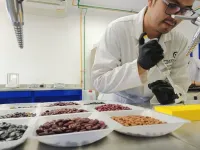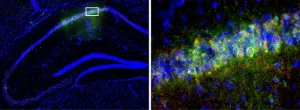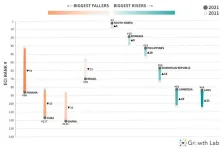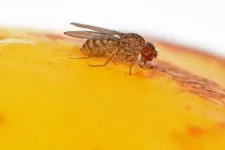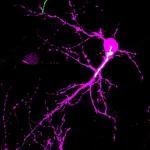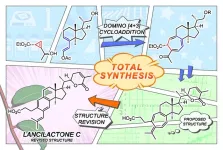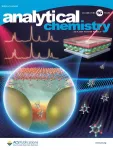(Press-News.org) ITHACA, N.Y. - When considering ways to sustainably generate environmentally friendly products, bacteria might not immediately spring to mind.
However, in recent years scientists have created microbe-semiconductor biohybrids that merge the biosynthetic power of living systems with the ability of semiconductors to harvest light. These microorganisms use solar energy to convert carbon dioxide into value-added chemical products, such as bioplastics and biofuels. But how that energy transport occurs in such a tiny, complex system, and whether the process can be improved, is still unclear.
Cornell University researchers have developed a multimodal platform to image these biohybrids with single-cell resolution, to better understand how they function and how they can be optimized for more efficient energy conversion.
The team’s paper, “Single-Cell Multimodal Imaging Uncovers Energy Conversion Pathways in Biohybrids,” published July 27 in Nature Chemistry. The co-lead authors are postdoctoral researcher Bing Fu and former postdoctoral researcher Xianwen Mao.
The project was led by Peng Chen, professor of chemistry in the College of Arts and Sciences. The effort is an offshoot of a larger collaboration – with Tobias Hanrath, professor at the Smith School of Chemical and Biomolecular Engineering in Cornell Engineering, and Buz Barstow, assistant professor of biological and environmental engineering in the College of Agriculture and Life Sciences – that was funded by the U.S. Department of Energy (DOE) to explore microscopic imaging of microbes as a way to advance bioenergy research.
Biohybrid research has typically been conducted with bacteria in bulk – essentially a large amount of cells in a bucket, Peng said – emphasizing the overall yield of the value-added chemicals and the collective behaviors of the cells, rather than the underlying mechanism that enables the complex chemical transformation.
“Biology is very heterogeneous. The individual cells are very different. Now, in order to interrogate it better, you really need to measure it at a single-cell level,” Chen said. “This is where we come in. We provide quantitative assessments of protein behaviors and also a mechanistic understanding of how the electron transport occurs from the semiconductor to the bacteria cell.”
The new platform combined multi-channel fluorescence imaging with photoelectrochemical current mapping to survey the bacterium Ralstonia eutropha. The platform was able to simultaneously image, track and quantitate multiple proteins in the cell while also measuring the flow of electrons, ultimately correlating the cellular protein properties and electron transport processes.
The researchers successfully differentiated the functional roles of two types of hydrogenases – one bound to the cell’s membrane, and a soluble one in the cytoplasm – that help metabolize hydrogen and drive CO2 fixation. While the soluble hydrogenase is known to be critical for metabolizing hydrogen, the researchers found that the membrane-bound hydrogenase, while less important, actually facilitates the process and makes it more efficient.
In addition, the researchers obtained the first experimental evidence that the bacteria can uptake a large amount of electrons from semiconductor photocatalysts. The team measured the electron current and found it be three orders of magnitude larger than what scientists previously thought, which suggests that future bacteria strains could be engineered to improve the efficiency of energy conversion.
The researchers also discovered that membrane-bound and soluble hydrogenases play an important role in mediating the electron transport from the semiconductor into the cell. Meanwhile, not only can the cell accept electrons; it can also spit them out in the opposite direction, without the assistance of hydrogenases.
The imaging platform is generalizable enough that it can be used to study other biological-inorganic systems, including yeast, and for other processes, such as nitrogen fixation and pollutant removal.
“Our multimodal imaging platform is powerful, but it of course has its own limits,” Chen said. “We can image and study proteins, but our approach does not allow us to analyze small molecule compositions. And so one can think about further integrating our approach with other techniques – for example, nanoscale mass spectrometry – so it would be really powerful. We’re not there yet.”
The research was supported by the DOE’s Biomolecular Characterization and Imaging Science program.
The researchers made use of the Cornell Center for Materials Research Shared Facilities, which is supported through the National Science Foundation’s MRSEC program.
END
Imaging shows how solar-powered microbes turn CO2 into bioplastic
2023-07-28
ELSE PRESS RELEASES FROM THIS DATE:
Novel Raman technique breaks through 50 years of frustration
2023-07-28
Raman spectroscopy — a chemical analysis method that shines monochromatic light onto a sample and records the scattered light that emerges — has caused frustration among biomedical researchers for more than half a century. Due to the heat generated by the light, live proteins are nearly destroyed during the optical measurements, leading to diminishing and non-reproducible results. As of recently, however, those frustrations may now be a thing of the past.
A group of researchers with the Institute for Quantum Sciences and Engineering at Texas A&M ...
Unique Mexican black and pinto bean varieties are high in healthy compounds
2023-07-28
URBANA, Ill. – Common beans are important food sources with high nutritional content. Bean seeds also contain phenolic compounds, which have antioxidant and anti-inflammatory properties that promote health. A study from the University of Illinois Urbana-Champaign and CIATEJ in Guadalajara, Mexico, explored the composition of seed coat extracts from black and pinto bean varieties unique to the Chiapas region of Southern Mexico.
“These beans are preserved among Mayan communities and grown by indigenous farmers. They are heirlooms from past generations and are important because of their cultural significance and contribution to biodiversity,” explained ...
Circadian clock gene helps mice form memories better during the day
2023-07-28
A gene that plays a key role in regulating how bodies change across the 24-hour day also influences memory formation, allowing mice to consolidate memories better during the day than at night. Researchers at Penn State tested the memory of mice during the day and at night, then identified genes whose activity fluctuated in a memory-related region of the brain in parallel with memory performance. Experiments showed that the gene, Period 1, which is known to be involved in the body’s circadian clock, is crucial for improved daytime memory performance.
The research demonstrates a link between the circadian system and memory formation ...
Neonatal stem cells from the heart could treat Crohn’s disease
2023-07-28
Research from Ann & Robert H. Lurie Children’s Hospital of Chicago found that direct injection of neonatal mesenchymal stem cells, derived from heart tissue discarded during surgery, reduces intestinal inflammation and promotes wound healing in a mouse model of Crohn’s disease-like ileitis, an illness marked by chronic intestinal inflammation and progressive tissue damage.
The study, published in the journal Advanced Therapeutics, offers a promising new and alternative treatment approach that avoids the pitfalls of current Crohn’s disease medications, including diminishing effectiveness, ...
China, Indonesia, and Vietnam lead global growth for coming decade in new Harvard Growth Lab projections
2023-07-28
Cambridge, MA – China, India, Indonesia, Uganda, and Vietnam are projected to be among the fastest-growing economies for the coming decade, according to researchers at the Growth Lab at Harvard University. The new growth projections presented in The Atlas of Economic Complexity include the first detailed look at 2021 trade data, which reveal continued disruptions from the uneven economic recovery to the global pandemic. China is expected to be the fastest-growing economy per capita, although its growth rate is smaller than gains seen over the past decade.
Growth over the coming decade is projected to take off in three growth poles, East Asia, Eastern ...
Researchers tickle rats to identify part of the brain critical for laughter and playfulness
2023-07-28
To study play behaviors in animals, scientists must be able to authentically simulate play-conducive environments in the laboratory. Animals like rats are less inclined to play if they are anxious or restrained, and there is minimal data on the brain activity of rats that are free to play. After getting rats comfortable with a human playmate, tickling them under controlled conditions, then measuring the rats’ squeaks and brain activity, a research team reports on July 27 in the journal Neuron that a structure in rat brains called the periaqueductal gray is essential for play and laughter.
“We know that vocalizations such as laughter are very ...
Scientists discover secret of virgin birth, and switch on the ability in female flies
2023-07-28
Scientists have pinpointed a genetic cause for virgin birth for the first time, and once switched on the ability is passed down through generations of females.
For the first time, scientists have managed to induce virgin birth in an animal that usually reproduces sexually: the fruit fly Drosophila melanogaster.
Once induced in this fruit fly, this ability is passed on through the generations: the offspring can reproduce either sexually if there are males around, or by virgin birth if there aren’t.
For most animals, reproduction is sexual - it involves a female’s egg being fertilised by a male’s sperm. ...
Uncovering how the Golgi apparatus impacts early postnatal neuron development
2023-07-28
Neurons are the cells that constitute neural circuits and use chemicals and electricity to receive and send messages that allow the body to do everything, including thinking, sensing, moving, and more. Neurons have a long fiber called an axon that sends information to the subsequent neurons. Information from axons is received by branch-like structures that fan out from the cell body, called dendrites.
Dendritic refinement is an important part of early postnatal brain development during which dendrites are tailored to make specific connections with appropriate axons. In a recently published paper, researchers present evidence showing how a mechanism within the neurons of a rodent involving ...
Total recall on HIV
2023-07-28
Kyoto, Japan -- Having control over how a dish is cooked is always a good idea. Taking a hint from the kitchen, scientists appear to have discovered a way to produce a true structure of the rare but naturally-occurring anti-HIV compound Lancilactone C from start to finish.
Its non-cytotoxicity in mammals could make this triterpenoid an ideal candidate for treating AIDS if its biological activity were clear -- and if only it were abundant in nature.
Now, a research group at Kyoto University has succeeded in ...
Scientists suggest AgNP/MoS2 nano-pocket for surface-enhanced raman spectroscopy scattering detection
2023-07-28
The research group of YANG Liangbao at the Institute of Health and Medical Technology, Hefei Institutes of Physical Science (HFIPS), Chinese Academy of Science (CAS) has recently developed a surface-enhanced Raman spectroscopy (SERMS) method to automatically capture target molecules in AgNP/MoS2 nano-pockets, which enables highly sensitive and long-duration dynamic detection of some chemical reaction processes.
The results were published in Analytical Chemistry and selected as the front cover.
Surface-enhanced Raman spectroscopy (SERS) is a kind of molecular spectroscopy with fast, highly sensitive, ...
